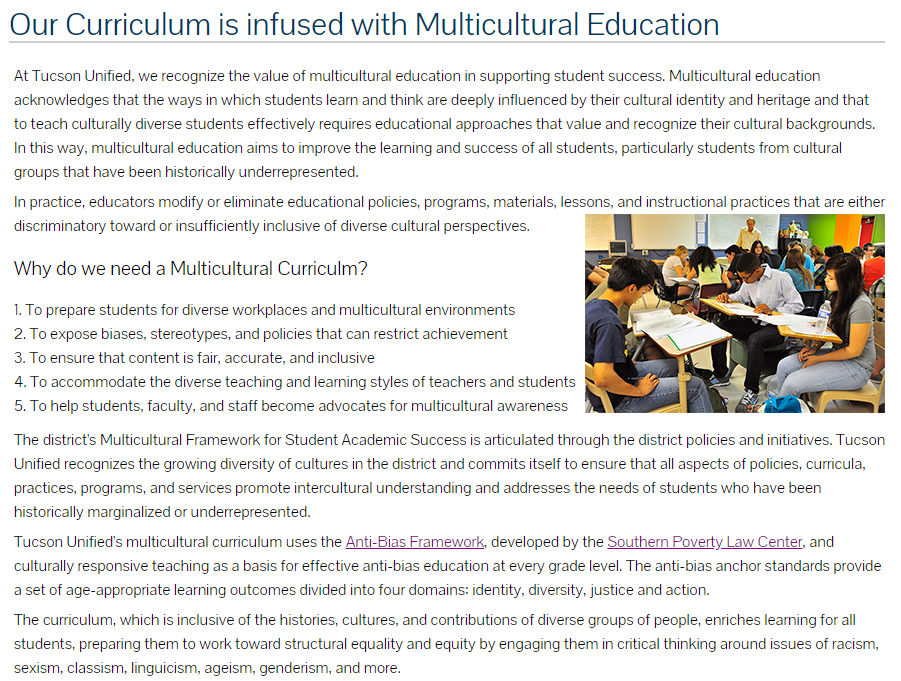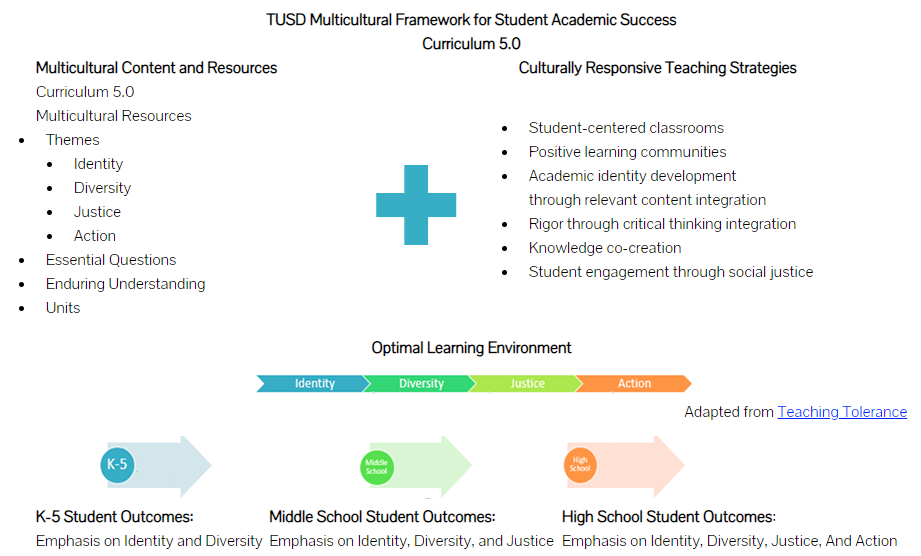
Tucson Unified School District is using Learning for Justice’s Social Justice Standards to build “multicultural” curriculum for students
Incidents
The Tucson Unified School District has a page online for the “Office of Curriculum and Instruction.” The district explains on this page that “our curriculum is infused with multicultural education” by working with the organization Learning for Justice of the Southern Poverty Law Center. The school district explains: “Tucson Unified’s multicultural curriculum uses the Anti-Bias Framework, developed by the Southern Poverty Law Center, and culturally responsive teaching as a basis for effective anti-bias education at every grade level.” The link on “Anti-Bias Framework” links to Learning for Justice’s “Social Justice Standards.”
The school district then explains that a goal is to turn students into political activists: “The anti-bias anchor standards provide a set of age-appropriate learning outcomes divided into four domains: identity, diversity, justice and action.” The district further explains that the curriculum will prepare students “to work toward structural equality and equity by engaging them in critical thinking around issues of racism, sexism, classism, linguicism, ageism, genderism, and more.”
The four main themes to teach students are identity, diversity, justice, and action. The intended outcome for students in kindergarten through the fifth grade is an “emphasis on identity and diversity.” The intended outcome for middle school students is “emphasis on identity, diversity, and justice.” The intended outcome for high school students is an “emphasis on identity, diversity, justice, and action.”


The organization Learning for Justice has pushed for its “Social Justice Standards” to be adopted in schools throughout the country. The document for these standards includes goals to achieve for students. One goal is that “students will develop language and historical and cultural knowledge that affirm and accurately describe their membership in multiple identity groups.” Another goal appears to outright state that the purpose of the “Social Justice Standards” is to turn students into political activists: “Students will make principled decisions about when and how to take a stand against bias and injustice in their everyday lives and will do so despite negative peer or group pressure.”

Stay Informed
